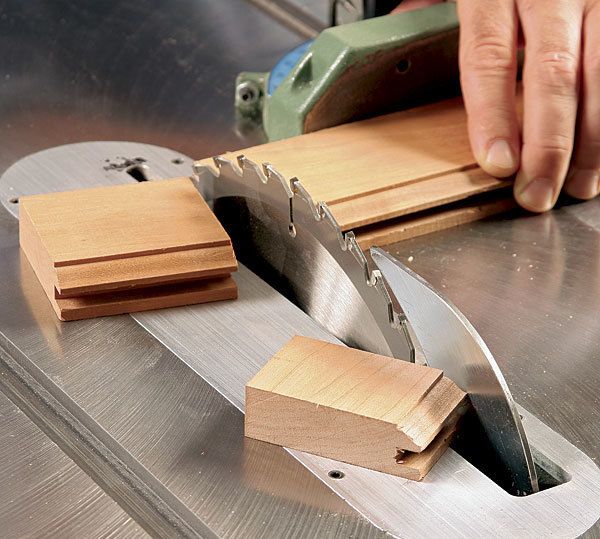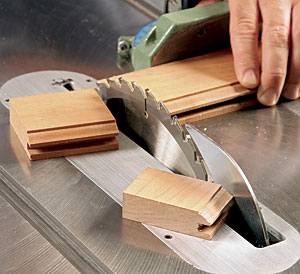Riving Knives vs. Splitters
What's the Difference: Learn how and when to use these tablesaw safety aids

If you’re in the market for a new tablesaw or intend to buy one in the near future, chances are that it will be fitted with a riving knife. This dorsal-fin-shaped piece of metal fixed to the arbor of the saw prevents wood from coming in contact with the teeth on the back of the blade. If you use an old-school splitter, you may not get all the hype about the new riving knives. After all, both products are designed to prevent kickback. But there are several important differences between these safety components.
Riving knives are more versatile

Because a riving knife is attached to the arbor of the saw, it travels with the blade as it’s raised, lowered, and tilted. A riving knife is kept at a constant distance from the back side of the blade at all times.
Riving knives come in high-profile and low-profile versions. High-profile riving knives are usually integrated into a larger blade-guard system and are best used whenmaking through-cuts. A low-profile riving knife sits slightly lower than the height of the blade. It can be used for through-cuts as well, but it really shines when making buried cuts like dadoes and rabbets. Some riving knives also can be adjusted for both types of cuts.
With such versatility, a riving knife rarely has a reason for being removed, which means the saw is safer during all your cuts, not just some of them.
There is no excuse not to use it. A low-profile riving knife offers constant protection, but its greatest asset is that it will never get in your way, which means you’ll never be tempted to remove it.
A splitter offers limited protection
A splitter is stationary, so it must be set far enough back on the throat plate of the tablesaw to prevent interference when the blade is raised to its full height. When the blade is raised to make deep cuts, the distance between the splitter and the blade is rather small, so the splitter effectively prevents kickback. As the blade is lowered, however, the distance between it and the splitter grows, leaving room for wood to contact the teeth.
Also, when the blade is tilted to make an angled cut, the splitter has to be removed. Splitters are usually fussy to reinstall, so it becomes tempting to leave them off for good.
Splitters have a leg up on riving knives in one regard, though. They can be retrofitted to your existing tablesaw, whereas a riving knife can’t be. Some protection is better than no protection.
Better than nothing. Splitters are a wise addition to any saw that doesn’t have a factory-installed riving knife. However, with the blade positioned to make cuts through thin stock, kickback can still occur.
Fine Homebuilding Recommended Products
Fine Homebuilding receives a commission for items purchased through links on this site, including Amazon Associates and other affiliate advertising programs.

Reliable Crimp Connectors

Handy Heat Gun

Affordable IR Camera






















